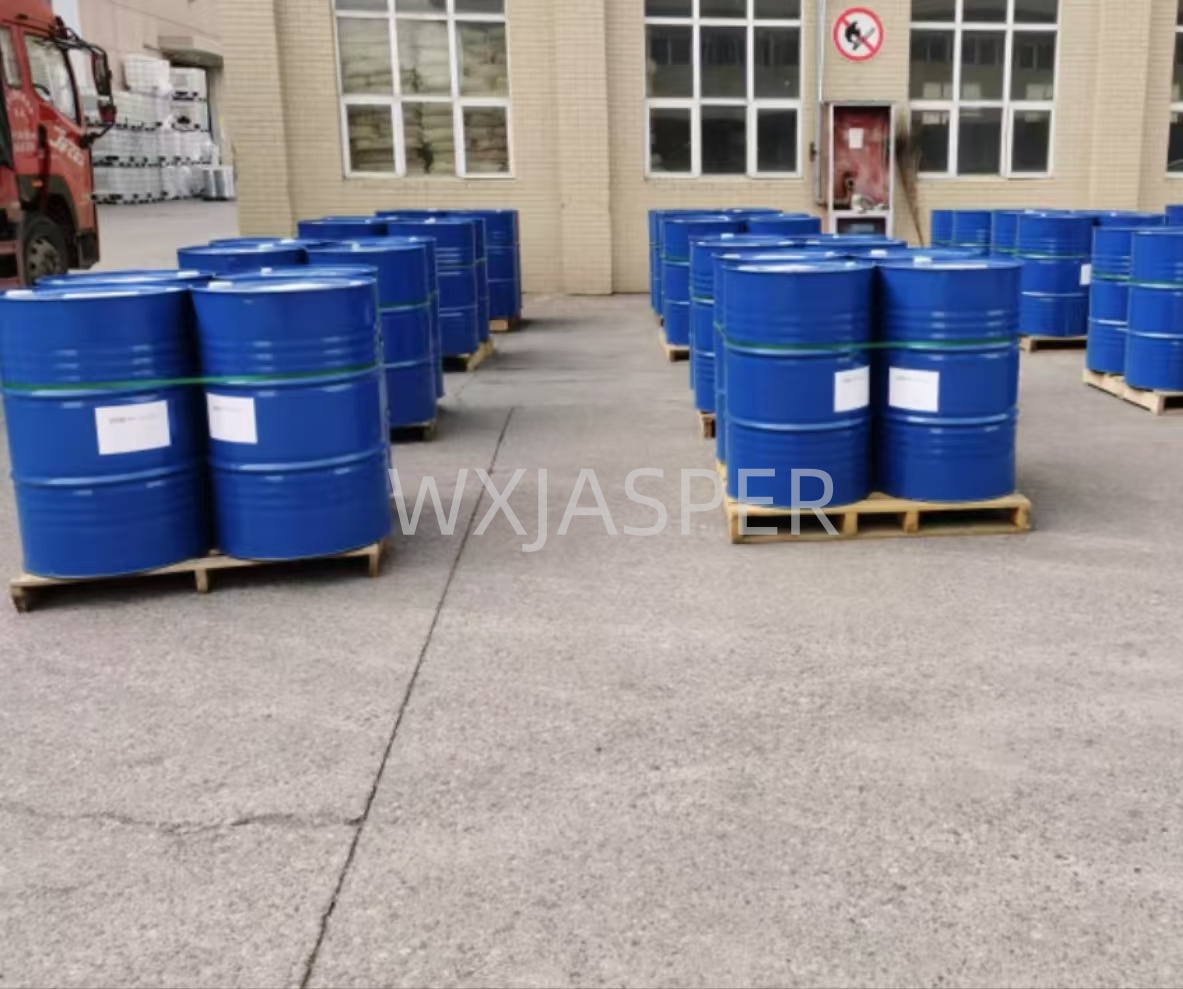Product Details
CasNo: 616-38-6
MF: C3H6O3
Appearance: liquid
Delivery Time: 15 days
Packing: 200kg/drum
Purity: 99%
Basic Information
- Chinese Name: 碳酸二甲酯
- English Name: Dimethyl Carbonate (abbreviated as DMC)
- CAS No.: 616-38-6
- Molecular Formula: C₃H₆O₃
- Molecular Weight: 90.08 g/mol
- Appearance: Colorless transparent liquid
- Odor: Mild ether-like fragrance
Physical and Chemical Properties
- Melting Point: 4℃
- Boiling Point: 90.1℃
- Density: 1.069 g/cm³ (at 20℃)
- Flash Point: 17℃ (closed cup)
- Solubility: Slightly soluble in water (solubility approx. 1.8% at 20℃); miscible with most organic solvents such as ethanol, acetone, and ether.
- Vapor Pressure: 7.3 kPa (at 20℃)
- Refractive Index: 1.3697 (at 20℃)
- Autoignition Temperature: 465℃
- Explosion Limit: 3.1%–20.5% (volume fraction in air)
Production Methods
-
Methanol Oxidative Carbonylation Method (Mainstream Process):
- Uses methanol, carbon monoxide, and oxygen as raw materials. Under the action of a catalyst (e.g., PdCl₂-CuCl₂ system), the reaction produces DMC. This method has high atom economy and aligns with the concept of green chemistry.
- Reaction equation: 2CH₃OH + CO + ½O₂ → (CH₃O)₂CO + H₂O
-
Transesterification Method:
- Uses propylene oxide (or ethylene oxide), carbon dioxide, and methanol as raw materials. DMC is obtained via transesterification between propylene carbonate (or ethylene carbonate) and methanol, with propylene glycol (or ethylene glycol) as a by-product.
-
Phosgene Method (Gradually Phased Out):
- Methanol reacts with phosgene to produce DMC. Due to the high toxicity of phosgene and the generation of hydrogen chloride pollution, this method has been replaced by environmentally friendly processes.
Applications
1. Green Chemical Raw Material
- Methylating Agent: Replaces dimethyl sulfate (highly toxic) in methylation reactions of phenols and amines, e.g., for synthesizing anisole and N-methylaniline.
- Carbonylating Agent: Replaces phosgene in the synthesis of polycarbonates, urethanes, and isocyanates—for instance, reacting with bisphenol A to produce polycarbonate.
2. Solvent and Additive
- Coating/Ink Solvent: Features high boiling point and low toxicity; replaces solvents like toluene and xylene in environment-friendly coatings.
- Lithium-Ion Battery Electrolyte: Acts as a solvent to improve lithium-ion conductivity, commonly used in lithium-ion battery electrolyte formulations (e.g., mixed with ethylene carbonate and ethyl carbonate).
3. Energy Sector
- Gasoline Additive: Improves octane number (RON approx. 105), replaces methyl tert-butyl ether (MTBE), and reduces air pollution.
- Fuel Cell: Can be used as an indirect fuel for methanol fuel cells, generating methanol via hydrolysis to supply energy.
4. Pharmaceutical and Pesticide Intermediate
- Used in the synthesis of antiepileptic drugs, antibiotic intermediates, and pesticides such as carbamate insecticides.
Quality Specifications (Industrial Grade)
| Item |
Specification |
| Purity (GC) |
≥99.5% |
| Moisture Content |
≤0.05% |
| Acidity (calculated as H₂CO₃) |
≤0.01% |
| Color (Pt-Co Scale) |
≤10 Hazen |
| Evaporation Residue |
≤0.005% |
Safety Information
- Toxicity: Low toxicity. The oral LD₅₀ for rats is 1.3–2.2 g/kg. It causes mild irritation to the skin and eyes and has no carcinogenicity (compared with products from the phosgene method).
- Hazardous Characteristics: Flammable. Its vapor forms an explosive mixture with air; exposure to open flames or high heat may cause combustion. It reacts violently with strong oxidants (e.g., peroxides).
- GHS Classification:
- Flammable Liquids (Category 3)
- Skin Irritation (Category 2)
- Eye Irritation (Category 2A)
- Protective Measures:
- Wear solvent-resistant gloves and safety goggles during operation; use in a fume hood or explosion-proof environment.
- Store in a cool, well-ventilated area, away from ignition sources and oxidants; keep containers sealed.
- UN Dangerous Goods Shipping Number: UN 1161 (Flammable Liquid, Packing Group III)
Environmental Advantages
Known as a "green chemical product," DMC is biodegradable and far less toxic than traditional solvents (e.g., benzene, halogenated hydrocarbons). It complies with EU REACH regulations and is an ideal raw material for replacing toxic chemicals.


